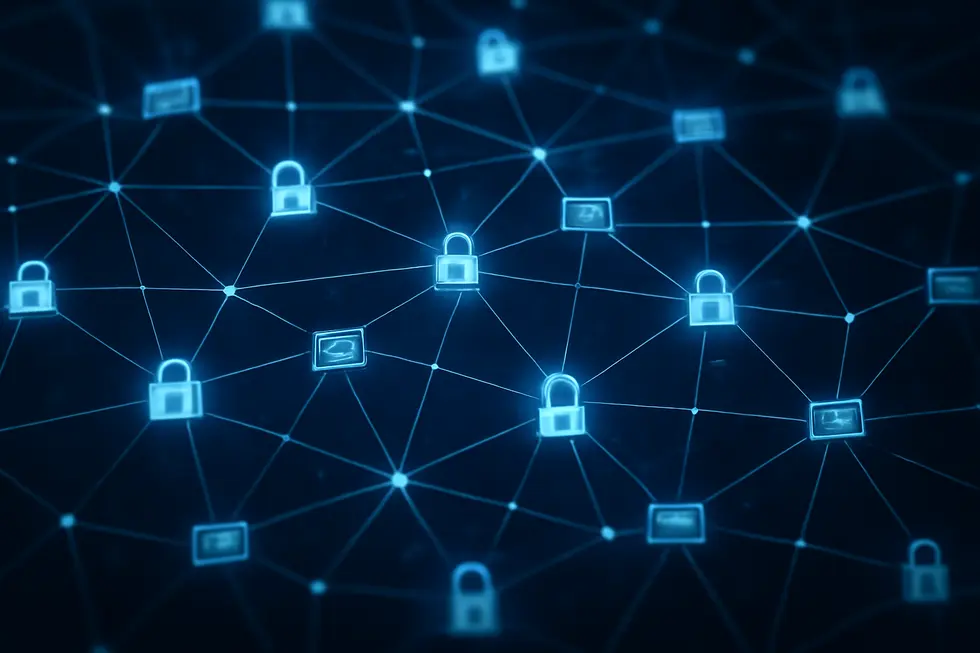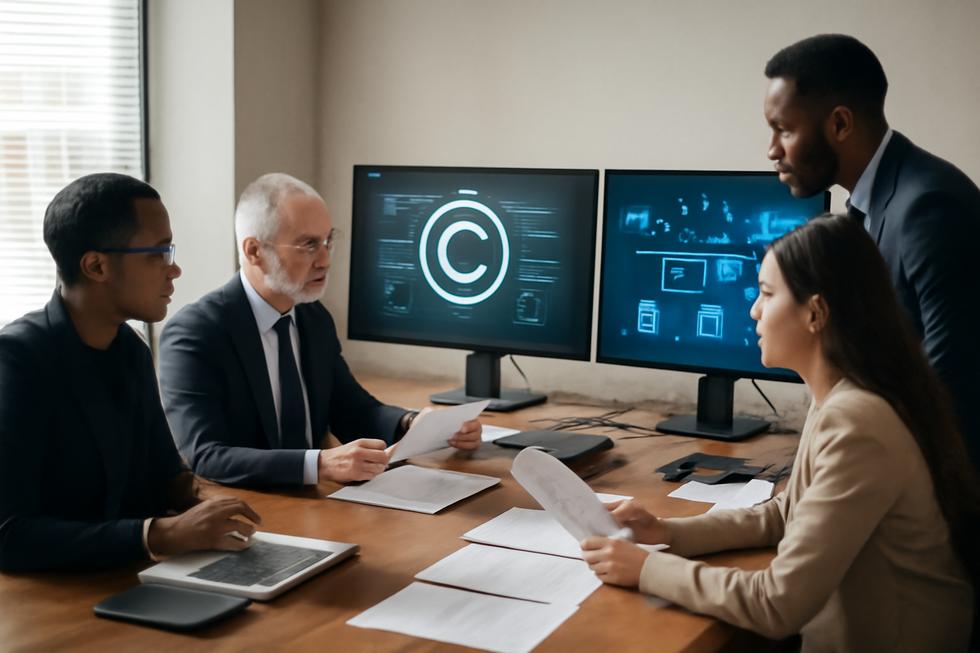Introduction
Understanding the copyright distribution right is fundamental for business owners who handle creative works, whether it’s books, software, music, or digital media. This right grants exclusive authority over how copies of copyrighted materials are sold and distributed to the public, ensuring creators and companies can protect their investments and revenue. The first chapter explains the legal foundation and scope of the distribution right, clarifying what protections it provides. Following this, the second chapter explores the first sale doctrine, a critical limitation allowing lawful owners to resell or lend copies, which business owners must navigate strategically. The third chapter focuses on how distribution rights can be transferred or licensed through contracts, offering a clear framework for forging partnerships and expanding market reach. Finally, the fourth chapter tackles the complexities introduced by digital distribution, including modern challenges and controls like Digital Rights Management (DRM). Together, these chapters offer a comprehensive guide that connects legal principles with practical implications tailored for your business success.
Tables of Contents
Chapter 1: The Scope and Legal Basis of the Copyright Distribution Right
- Establishing the Legal Foundations and Exclusive Privileges of the Copyright Distribution Right
- Exclusive Control and Licensing: How Copyright Owners Govern Distribution Rights
- Navigating Technological Challenges: Legal Adaptations in Copyright Distribution Control
- Economic Foundations and Incentives Shaping the Copyright Distribution Right
- Navigating Geopolitical and Societal Dimensions of Copyright Distribution Enforcement
Chapter 2: Implications of the First Sale Doctrine on the Copyright Distribution Right
- Navigating the Divide: How the First Sale Doctrine Shapes Physical and Digital Distribution Rights
- Balancing Consumer Freedom and Market Dynamics Under the First Sale Doctrine
- Navigating Licensing Structures: How the First Sale Doctrine Shapes Digital Distribution Control
- Digital Transformation and the Complex Challenges to the First Sale Doctrine in Copyright Distribution
- Reconciling Copyright Control and Consumer Rights: The Complex Role of the First Sale Doctrine
Chapter 3: Transfer and Licensing Mechanisms of the Copyright Distribution Right
- Foundations and Contractual Frameworks Governing Distribution Right Transfers and Licenses
- Navigating Ownership and Control: Unpacking Transfer Versus Licensing of Distribution Rights
- Essential Contractual Structures Governing Transfer and Licensing of Distribution Rights
- Innovations and Economic Strategies Shaping Copyright Distribution Transfers and Licenses
- Navigating Global Realities: Geopolitical and Societal Influences on Distribution Right Transfers and Licenses
Chapter 4: Digital Challenges and the Copyright Distribution Right
- Navigating Technological Hurdles: Digital Innovations and the Evolving Copyright Distribution Right
- Transforming Licensing and Market Models: Economic Impacts of Digital Distribution Rights
- Cross-Border Enforcement and Geopolitical Complexities in the Digital Copyright Landscape
- Societal Dynamics in Digital Copyright Distribution: Harmonizing Access Rights and Creator Protections
- Navigating AI and Digital Innovations: Legal and Technological Advances in Copyright Distribution
Chapter 1: The Scope and Legal Basis of the Copyright Distribution Right

1. Establishing the Legal Foundations and Exclusive Privileges of the Copyright Distribution Right
The copyright distribution right grants the copyright owner exclusive authority to control how copies of their work reach the public, forming a core economic right embedded within copyright statutes. Grounded in national laws such as U.S. Code 17 U.S.C. § 106, this right functions primarily as a negative right, prohibiting unauthorized sales, transfers, rentals, or lending of physical and digital copies without permission. It ensures creators can monetize distribution by granting exclusive control over dissemination in various formats. This right may be licensed or transferred, allowing rights holders to empower others under defined contractual terms while maintaining legal protection. Despite its exclusivity, this right is balanced by limitations like the first sale doctrine and statutory exceptions, which preserve public interests such as resale and educational uses. Through this framework, copyright law fosters innovation by securing creators’ economic incentives while maintaining reasonable access to creative works. For deeper insights into copyright economic rights, see more at Characteristics of Copyright Business.
2. Exclusive Control and Licensing: How Copyright Owners Govern Distribution Rights
The copyright distribution right empowers owners with exclusive authority to manage how their works reach the public. This right covers selling, renting, leasing, or transferring ownership of physical or digital copies, forming a core economic interest within copyright law. Rather than handing over full ownership, copyright holders often use licensing agreements to allow controlled distribution under specific terms—like geographic limits or time frames—preserving overall ownership while enabling monetization. These licenses prevent unauthorized resale or lending beyond intended scope and support diverse revenue models such as subscriptions or limited-term use. This balance between exclusivity and flexibility ensures creators can culturally and commercially benefit from their works. For a deeper dive into copyright’s economic rights and licensing, see this detailed copyright definition and economics guide. Additional insight is available from the Bytescare article explaining the legal foundations of these exclusive rights and licensing frameworks.[1]
3. Navigating Technological Challenges: Legal Adaptations in Copyright Distribution Control
The copyright distribution right secures exclusive control over the public dissemination of creative works. However, technological advancements—especially digital formats—have complicated enforcement and traditional control mechanisms. Digital copying and global internet access enable rapid sharing beyond physical and territorial limits, challenging copyright holders to protect their economic interests. Legal frameworks have responded by refining statutory provisions and contractual licensing terms. For instance, exceptions like U.S. Section 108 balance copyright protection with public access via libraries and archives, permitting limited reproduction and lending under strict conditions. Additionally, licensing agreements now carefully define geographic scope, duration, exclusivity, and uses to adapt to complex digital distribution methods. These evolving regulations and contracts aim to reconcile creators’ rights with practical realities, ensuring effective control without stifling access or innovation. For a deeper understanding of copyright fundamentals and economic rights, see this comprehensive guide on copyright and economics in business. More details on statutory exceptions can be found under U.S. Copyright Act Section 108.
4. Economic Foundations and Incentives Shaping the Copyright Distribution Right
The copyright distribution right establishes exclusive control over the commercial dissemination of copyrighted works, including sale, rental, or lending. Rooted in national statutes, it grants creators a temporary monopoly as intangible property rights, preventing unauthorized public distribution. Economically, this right incentivizes creative production by enabling authors to monetize their works through sales or licensing agreements, while distributors obtain lawful avenues to exploit markets under authorized contracts. This balance fosters ongoing cultural production, securing creators’ revenues while ensuring public access post-copyright expiration. The legal framework thus supports not only innovation but also sustainable commercial exploitation. Digital distribution further complicates these dynamics, demanding clear contractual and legal mechanisms. For a deeper understanding of how copyright drives economic value for businesses, consult this overview of copyright characteristics in business. More insights are available at https://www.lisedunetwork.com/copyright-brief-information/
5. Navigating Geopolitical and Societal Dimensions of Copyright Distribution Enforcement
The copyright distribution right empowers owners to exclusively control public distribution of copies, a right grounded in national laws like 17 U.S.C. §106. Yet, enforcement varies sharply across jurisdictions due to diverse legal frameworks, political climates, and economic priorities. International treaties seek harmonization but respect local nuances, resulting in distinct enforcement landscapes shaped by cross-border licensing and geopolitical interests.
Societal values also strongly influence this right’s application. Public attitudes toward intellectual property affect how rigorously these rights are enforced and balanced against public access. Doctrines such as fair use reflect attempts to reconcile creators’ economic interests with cultural and educational needs. Ethical debates intensify as digital technologies challenge traditional distribution models, prompting evolving norms around digital sharing and compensation.
This complex interaction between legal basis, geopolitical differences, and societal perspectives fundamentally shapes the global governance of distribution rights, making understanding these forces key to navigating copyright’s modern dynamics. For more detailed insight into copyright economics and business implications, see this copyright definition and economics resource.
Additional authoritative analysis on the legal basis and international context can be found at Columbia Law School’s copyright glossary: https://usnwc.libguides.com/copyright/authors
Chapter 2: Implications of the First Sale Doctrine on the Copyright Distribution Right

1. Navigating the Divide: How the First Sale Doctrine Shapes Physical and Digital Distribution Rights
The first sale doctrine distinctly limits the copyright holder’s distribution rights for physical goods, allowing owners to resell, lend, or transfer lawful copies without permission. This fosters flourishing secondary markets, such as used bookstores and libraries, where consumers exercise property-like rights over tangible media. Conversely, digital goods remain under strict copyright control despite similar public use. Digital copies are commonly licensed, not owned outright, and their perfect replicability complicates any extension of the first sale doctrine. As a result, digital content providers maintain tighter control over distribution downstream, often enforcing restrictions through licensing terms and technological measures like DRM. This legal distinction underscores ongoing debates about balancing creators’ revenues with consumer rights in the digital realm. For a deeper analysis of these evolving challenges, see First Sale Doctrine in the Era of Digital Goods. Moreover, understanding the broader context of copyright economics enhances grasping these nuances, available at copyright economics and business.
2. Balancing Consumer Freedom and Market Dynamics Under the First Sale Doctrine
The First Sale Doctrine fundamentally reshapes consumer rights under the copyright distribution right by permitting resale, lending, or transfer of physical copies without additional permission from copyright holders. This principle empowers consumers to engage actively in secondary markets—such as used bookstores or rental services—extending the lifecycle and accessibility of tangible works. However, this exhaustion of distribution rights applies almost exclusively to physical goods, as digital content is typically licensed, not sold, restricting consumers’ ability to redistribute it freely. Consequently, copyright holders retain greater control over digital goods, fostering licensing models that limit secondary market participation and protect ongoing revenue streams. This divergence between physical and digital distribution profoundly influences market dynamics, shifting control away from consumers in digital realms. For copyright stakeholders, understanding these nuances is vital in crafting strategies that respect consumer interests while navigating the evolving digital landscape. For more insights on copyright economics and business implications, see our detailed exploration.
External resource: PatentPC’s article titled “First Sale Doctrine in the Era of Digital Goods” offers further analysis of these distinctions.
3. Navigating Licensing Structures: How the First Sale Doctrine Shapes Digital Distribution Control
The First Sale Doctrine fundamentally limits a copyright holder’s distribution rights after the initial authorized sale of a physical copy. This exhaustion of control empowers consumers to resell or lend physical works freely. However, the digital landscape challenges this model as transactions are often structured as licenses rather than sales. By licensing digital copies, copyright holders avoid triggering the First Sale Doctrine, retaining control over further distribution. These licenses grant usage under explicit terms that restrict resale or sharing, diverging sharply from traditional ownership rights. Consequently, consumers have limited ability to transfer digital works, while rights holders maintain significant control, preserving economic value in digital markets. This licensing approach has become a strategic norm, influencing how distribution rights operate in the face of evolving technology. Ongoing legal debates focus on balancing creator protections with digital consumer expectations, emphasizing clear licensing terms over expanding exhaustion principles. For a detailed exploration of licensing impact under the First Sale Doctrine, see First Sale Doctrine in the Era of Digital Goods. Additional insights into copyright law and business context are available at copyright definition economics business.
4. Digital Transformation and the Complex Challenges to the First Sale Doctrine in Copyright Distribution
The rise of digital media has fundamentally challenged the applicability of the First Sale Doctrine within copyright distribution rights. Unlike physical copies, digital files are intangible and perfectly replicable, complicating the concept of transferring “a particular copy” without infringement. Consumers often acquire licenses rather than ownership, limiting legal avenues for resale or lending under traditional principles. Furthermore, technological protection measures like Digital Rights Management (DRM) actively restrict the transfer and sharing of digital works, effectively curbing the consumer’s ability to exercise rights once assumed under the First Sale Doctrine. These technological safeguards, while protecting creators’ interests, create tension around consumer freedoms and secondary markets. As courts and lawmakers continue grappling with these issues, the emergence of AI-generated content and dynamic licensing structures further blur the boundaries of distribution rights. Ongoing legal adaptation is necessary to balance protection and access in the digital age. For a foundational understanding of copyright economics in business, see copyright definition and economics.
External resource: First Sale Doctrine in the Era of Digital Goods
5. Reconciling Copyright Control and Consumer Rights: The Complex Role of the First Sale Doctrine
The First Sale Doctrine is pivotal in balancing the copyright owner’s exclusive distribution right with consumer freedoms. It allows a purchaser of a copyrighted work to resell, lend, or transfer that specific copy without the copyright holder’s permission, thus limiting the control once the first authorized sale occurs. This legal principle sustains secondary markets and protects consumer interests in physical goods, while safeguarding creators’ rights over reproductions. However, its application to digital goods remains contentious due to their intangible nature and ease of perfect replication. Unlike physical items, digital copies cannot be treated as unique, complicating resale and lending rights under the doctrine. Consequently, U.S. law currently excludes digital copies from first sale protections, favoring licensing agreements instead. These licensing models ensure creators maintain proper compensation amidst digital distribution complexities, reflecting ongoing tensions between protecting copyright holders and expanding consumer rights. For a deeper understanding of how copyright and economic rights intersect, see copyright-definition-economics-business.
Chapter 3: Transfer and Licensing Mechanisms of the Copyright Distribution Right

1. Foundations and Contractual Frameworks Governing Distribution Right Transfers and Licenses
The copyright distribution right empowers the owner with exclusive authority to distribute copies of their work publicly, but its effective control hinges on legally binding transfers and licenses. The primary mechanism for transferring these rights is the assignment contract, which must be explicit and in writing to effectuate a valid change of ownership. Such assignments may occur before or after creation and are subject to statutory termination provisions allowing authors or heirs to reclaim rights after a designated period. Alternatively, licensing enables copyright holders to authorize third parties to distribute their works without relinquishing ownership, often governed by detailed agreements outlining royalties, sublicensing permissions, and quality controls to maintain the integrity of distribution.
Licensing arrangements also cover derivative works, delineating rights and revenue sharing while potentially preserving artistic oversight. These legal frameworks collectively ensure copyright owners maintain command over their works’ dissemination, balancing monetization with protective oversight. For deeper legal insights, resources like the U.S. Copyright Office provide comprehensive guidance on transfer and licensing practices. Further context on copyright concepts is available through this detailed copyright definition for business owners.
2. Navigating Ownership and Control: Unpacking Transfer Versus Licensing of Distribution Rights
The distinction between transfer and licensing of copyright distribution rights fundamentally shapes ownership, control, and financial arrangements. A transfer entails the outright assignment of ownership, enabling the transferee to fully exercise distribution rights, including sublicensing and resale, often secured by an upfront payment. This shift in control is significant, though statutory reversion rights—such as those in U.S. law—can allow original authors to reclaim ownership after a defined period. Conversely, licensing permits use without relinquishing ownership. Licenses, whether exclusive or non-exclusive, narrowly define the scope, duration, and territory of distribution, with the licensor retaining ultimate control and approving derivative works. Payment structures typically involve royalties or milestone fees, supporting ongoing commercial exploitation while preserving rights. This balance of control and flexibility makes licensing prevalent for sustained revenue, whereas transfers often suit definitive rights sales. Understanding these mechanisms is vital for strategic management of rights and revenue streams. For a comprehensive guide to licensing strategies within intellectual property, see Contracts Counsel.
3. Essential Contractual Structures Governing Transfer and Licensing of Distribution Rights
Contractual frameworks serve as the backbone for transferring and licensing distribution rights, precisely defining how these rights are assigned, limited, or shared between parties. These agreements clarify the scope—whether exclusive or non-exclusive—the duration, territorial limits, and permissible forms of distribution. Transfers may involve full or partial assignments, often reserving authors’ rights to reclaim their works under statutory provisions, such as termination rights codified in U.S. law. Licensing contracts, conversely, permit use without ownership transfer, frequently including strict terms on sublicensing and technology controls like prohibitions on reverse engineering. This legal scaffolding safeguards the copyright owner’s control over distribution, safeguarding economic interests amid physical and digital markets. Comprehensive agreements, such as technology transfer contracts, meticulously outline rights’ boundaries alongside dispute resolution and renewal terms. Understanding these contractual essentials is crucial for maintaining lawful distribution and maximizing the sustainable commercial exploitation of copyrighted works. For detailed guidance, consult resources on technology transfer agreements here or explore copyright strategy at Copyright Definition & Economics for Business.
4. Innovations and Economic Strategies Shaping Copyright Distribution Transfers and Licenses
The transfer and licensing of copyright distribution rights increasingly hinge on nuanced technological and economic considerations. License agreements often delineate ownership of derivative works, balancing the original owner’s control against the licensee’s creative freedom. This dynamic fosters innovation while safeguarding core intellectual property. Modern technologies like AI and blockchain are revolutionizing rights management by automating royalty calculations and securing licensing terms via smart contracts. Economically, strategic structuring of licenses—through royalty models or exclusive grants—drives market expansion and revenue sustainability. Legal factors such as copyright termination rights further influence long-term control over distribution. Moreover, broader policy frameworks that promote technology transfer and capacity building amplify the economic impact of these mechanisms worldwide. These evolving technological tools and economic strategies collectively enhance transparency, efficiency, and trust in managing the exclusive distribution right, reinforcing its role in supporting creators and markets alike. For further insights on derivative works in licensing, see guidance on ownership strategies. See also external resource on AI and blockchain impacts in rights management [2].
5. Navigating Global Realities: Geopolitical and Societal Influences on Distribution Right Transfers and Licenses
The transfer and licensing of the copyright distribution right are deeply shaped by geopolitical and societal forces. Variations in national copyright laws, influenced by differing legal traditions and cultural priorities, affect the territorial scope and enforcement of licensing agreements. International treaties attempt harmonization but allow distinct national rules, requiring cross-border licenses to navigate complex political and economic landscapes. Social perceptions play a pivotal role as well, balancing creators’ rights with public access interests, which influence terms on fair use and compensation. Licensing often addresses ownership of derivative works and incorporates territorial, usage, and enforcement clauses reflecting these legal and social nuances. These dynamics compel licensors and licensees to carefully tailor agreements to diverse jurisdictional realities and evolving societal expectations, ensuring control and ethical distribution of copyrighted works. For deeper insights on contractual aspects of copyright, see copyright as a contract.
Chapter 4: Digital Challenges and the Copyright Distribution Right

1. Navigating Technological Hurdles: Digital Innovations and the Evolving Copyright Distribution Right
The rise of digital technologies has revolutionized how copyrighted works are distributed, complicating traditional notions of the distribution right. Unlike physical goods, digital content can be replicated endlessly without quality loss, challenging the effectiveness of the first sale doctrine that governs physical copies. To address these challenges, copyright holders increasingly rely on technological safeguards such as Digital Rights Management (DRM), which embed restrictions directly into digital files to prevent unauthorized sharing and sales, although overly stringent DRM may alienate users. Emerging blockchain technologies offer promise by creating immutable ownership records and enabling controlled transfers of digital copies, yet they demand significant resources to implement. Meanwhile, AI-powered content recognition tools enhance infringement detection but wrestle with nuances like fair use and false positives. These technological advancements unfold against a backdrop of complex international legal frameworks, requiring careful navigation for cross-border digital distribution. As rapid digitization and data volumes grow, the copyright ecosystem must also confront workforce skill gaps and privacy concerns, emphasizing the need for adaptive technological and legal strategies. For further insight, this article on the first sale doctrine in the era of digital goods offers an in-depth exploration.
2. Transforming Licensing and Market Models: Economic Impacts of Digital Distribution Rights
The intersection of digital innovation and copyright distribution rights has reshaped licensing frameworks and market dynamics, creating intricate economic ripples globally. As digital transformation drives a projected $100 trillion economy by 2025, businesses adapt by shifting from traditional sales to tiered and subscription licensing models. These approaches allow precise control over content access while enhancing revenue streams. However, digital distribution also presents operational challenges, such as system integration complexities and a shortage of skilled professionals, complicating rights enforcement. Digital Rights Management (DRM) technologies have rapidly expanded to address piracy—responsible for over $200 billion in annual losses—using encryption, watermarking, and licensing controls. The growing DRM market, expected to reach $19.15 billion by 2034, reflects the vital role of technological enforcement in sustaining copyright distribution rights amid evolving digital landscapes. For more on copyright economics and business implications, visit copyright definition economics business. Detailed digital transformation insights can be found at https://www.amraandelma.com/digital-transformation-statistics/.
3. Cross-Border Enforcement and Geopolitical Complexities in the Digital Copyright Landscape
The digital era intensifies geopolitical complexities surrounding copyright distribution rights, as national laws and enforcement face the boundless nature of the internet. Divergent regulatory frameworks across countries complicate enforcement, especially where jurisdictional disputes arise around digital media distribution and streaming. Strategic rivalries, notably between the U.S. and China, impact digital governance through restrictions on technology and differing regulatory models, fragmenting global copyright protections. The rise of AI-generated content challenges traditional copyright concepts, raising critical issues about authorship and unauthorized use in AI training, spotlighting ongoing high-profile legal disputes. Additionally, cross-border digital trade and financial regulations further entangle copyright with geopolitical interests, as nations safeguard data flow and cybersecurity. Addressing these multifaceted challenges demands cooperative, adaptive governance frameworks balancing diverse national priorities while protecting creators’ distribution rights in a fluid geopolitical environment. For deeper insights, see the European Audiovisual Observatory’s analysis.
4. Societal Dynamics in Digital Copyright Distribution: Harmonizing Access Rights and Creator Protections
The evolving digital landscape challenges society to balance open access to content with safeguarding creators’ distribution rights. Licensing serves as a vital mechanism, enabling copyright holders to maintain control while fostering creative use across platforms. User education is equally critical; many copyright infringements arise from unawareness rather than intent, making accessible resources key to responsible digital sharing. Moreover, recognizing internet access as a socio-economic right raises ethical and legal questions about equitable inclusion and content regulation. Generative AI further complicates this balance, presenting unresolved issues on copyright ownership, usage rights, and liability that demand thoughtful policy responses. Social media’s role in shaping digital opinion emphasizes the tension between protecting intellectual property and promoting free expression. Together, these societal factors shape a complex ecosystem striving to uphold the copyright distribution right amid technological transformation.
For more on copyright fundamentals in business contexts, see copyright definition for business owners.
Explore European legal perspectives on AI and copyright here: https://legalblogs.wolterskluwer.com/copyright-blog/european-copyright-society-opinion-on-copyright-and-generative-ai/
5. Navigating AI and Digital Innovations: Legal and Technological Advances in Copyright Distribution
Navigating AI and Digital Innovations: Legal and Technological Advances in Copyright Distribution
The rapid evolution of AI and digital content challenges traditional copyright distribution rights, prompting innovative legal reforms and advanced enforcement tools. Lawmakers are updating frameworks to address ownership of AI-created works and clarify licensing for training data, reducing uncertainty while protecting copyright holders. Simultaneously, AI-powered detection systems assist in identifying unauthorized distributions, enhancing copyright enforcement efficiency. Legal professionals face hurdles adopting AI solutions but recognize their potential to transform copyright management. Regulatory landscapes vary, balancing pro-innovation policies with compliance mandates, especially in automated decision-making. International cooperation on copyright harmonization is increasingly vital amid global digital distribution. Addressing platform liability and over-enforcement risks remains central to preserving fair use and innovation. These developments together form a dynamic response to securing distribution rights in a complex digital era. For more on copyright law fundamentals in business, see the copyright definition for business owners.
For detailed insights, refer to the Oxford Journal’s analysis of AI, copyright, and platform liability here.
Final thoughts
Mastering the copyright distribution right is vital for business owners managing creative products to maintain control and maximize revenue. By understanding its legal scope, recognizing the first sale doctrine’s resale and lending exceptions, and effectively using transfer and licensing tools, businesses can strategically protect their assets. Additionally, facing the evolving landscape of digital distribution requires a proactive approach to address challenges like unauthorized sharing and DRM enforcement. Together, these aspects form a comprehensive framework enabling businesses to confidently navigate copyright laws while fostering growth and innovation.
Your IP is the foundation of your success – let’s protect it together before it’s too late. We can’t wait to help you turn your ideas into legally secured assets.
About us
undefined


